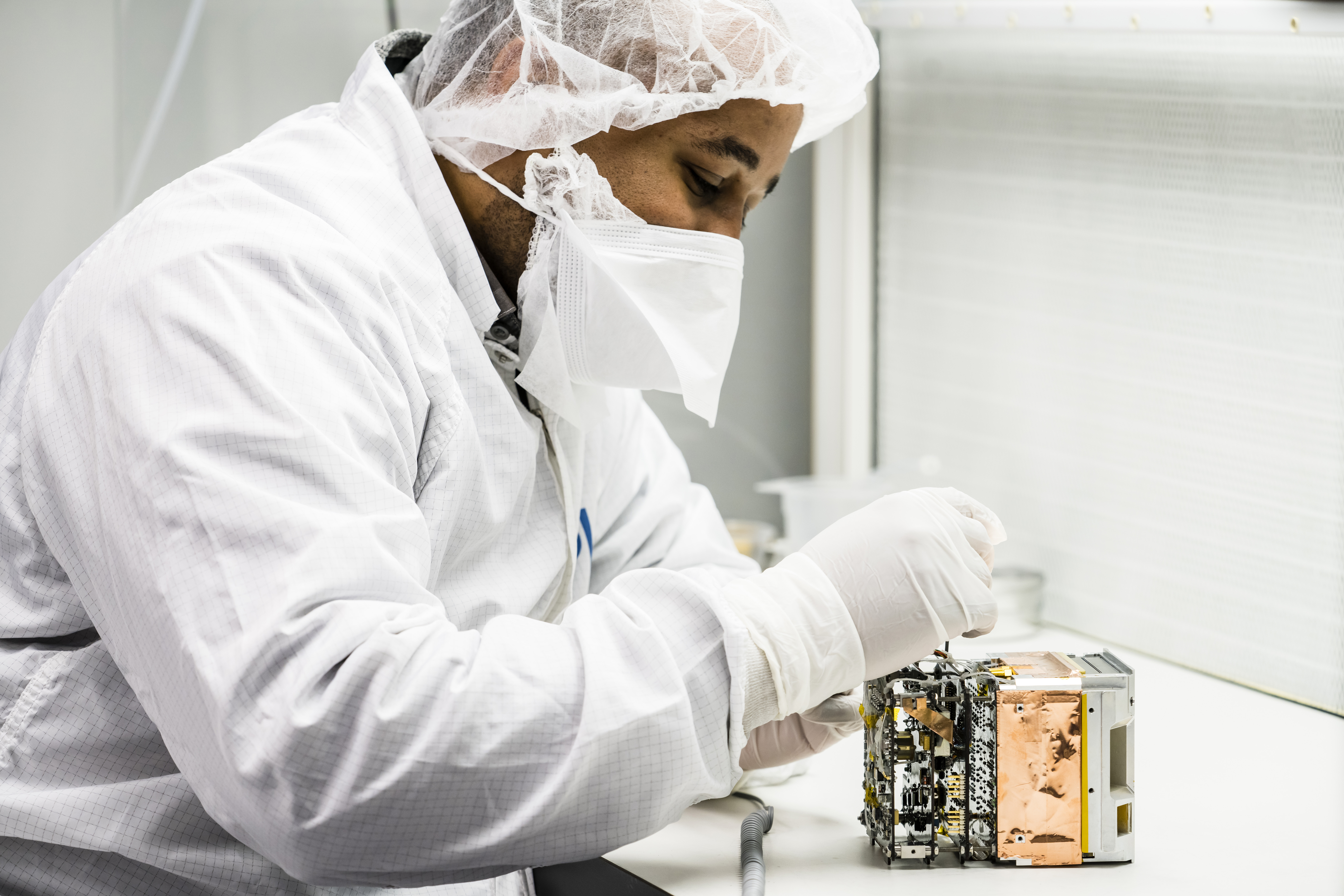
Scientists and engineers at the Johns Hopkins Applied Physics Laboratory (APL) have successfully delivered a miniaturized particle detection instrument for NASA’s Relativistic Electron Atmospheric Loss (REAL) CubeSat mission. Having shipped from APL’s campus in Laurel, Maryland, the first-of-its-kind instrument arrived in Montana on May 15, completing a major milestone in the mission’s development. It was carried to Montana State University, where it will be integrated with the spacecraft.
The instrument (also called REAL) will characterize the forces that cause electrons in Earth’s radiation belts to fall into the atmosphere, space weather events that affect the upper atmosphere — potentially even the climate — and can damage the increasing number of satellites in low Earth orbit.
The Sun is constantly spewing charged particles into space in a supersonic “gale” called the solar wind, reaching speeds near 550 miles (885 kilometers) per second. Under favorable conditions, this buffeting of Earth’s magnetic field energizes particles, creating two or sometimes three doughnut-shaped rings of radiation around Earth called the Van Allen Belts.
NASA’s Van Allen Probes, which APL designed, built and operated, spent seven years closely examining the radiation belts, returning eye-opening and transformative data. But what they couldn’t clarify was why particles in the belts sometimes spiral down into Earth’s atmosphere in short 100-millisecond microbursts.
“These radiation belt particles can be trapped there for long periods, going back and forth, along magnetic field lines, but if some interaction directs them more closely along the Earth’s magnetic field lines, they plunge into the atmosphere,” said Thomas Sotirelis, a physicist at APL, originator of the sensor concept and instrument scientist for the REAL spacecraft’s sole instrument.
From the Van Allen Probes’ observations and other experimental and theoretical work, scientists have theorized that plasma waves likely interact with the particles to shake them free; researchers even suspect they know what types of plasma waves are responsible. What they aren’t certain of is how frequently the interactions occur.
That’s where REAL comes in. Scheduled to launch this summer, the CubeSat will fly in low Earth orbit, pointing its particle detector instrument along Earth’s magnetic field to answer that unknown. The spacecraft will watch as radiation belt particles enter the atmosphere. By measuring how many particles are falling, how energetic they are and at what angle they fall relative to Earth’s magnetic field lines, scientists can discern what forces knocked the particles free in the first place.
“We’re really trying to get at the physics of how waves scatter these particles and how strong that scattering is at different energies,” said Robyn Millan, a space physicist at Dartmouth College in New Hampshire and the REAL mission’s principal investigator. “It’s really getting into understanding the microphysics of these interactions.”

The key to REAL’s power is the instrument’s miniaturized design. It includes three detectors packed into a small, roughly 85-cubic-inch (1,400-cubic-centimeter) shoebox-sized volume. Each sensor can observe electrons moving from 0 to 90 degrees relative to Earth’s magnetic field lines and with energies spanning three orders of magnitude — from 1 keV to 2 MeV. Previous mission instruments investigating the same phenomenon could observe particles only over a more limited energy range and with more limited directional information.
“Many previous state-of-the-art electron radiation instruments, like those on Van Allen Probes, looked in only one direction at a time!” Sotirelis said. “We’ve squeezed three multi-look direction instruments into the top of this 100-by-100-millimeter head — we’re really proud of the miniaturization and capability of this instrument.”
Similarly, unlike previous missions that could downlink only select portions of their data, REAL will transfer its data to APL’s 60-foot (18-meter) satellite dish, allowing it to download all its data quickly.
“It means we’re going to have a lot more data to work with, which will give us more statistical power than ever before,” Millan said.
The REAL CubeSat mission is led by Dartmouth College in collaboration with APL and Montana State University. Funding for REAL is provided through NASA’s Low-Cost Access to Space program. REAL will head to space through NASA’s CubeSat Launch Initiative.
Related Topics
For Media Inquiries
For all media inquiries, including permission to use images or video in our gallery, please contact:
Michael Buckley
All Media Resources

